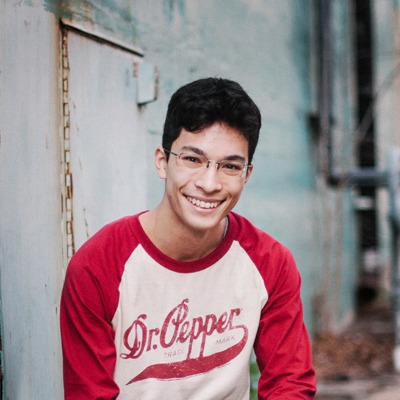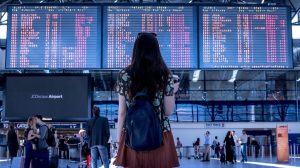Written From… A coffeeshop no more than a mile and a half from my apartment, USA
There’s a common misconception of travel that I’d like to address. I’ve noticed that, at some point in the past, the notion developed that travel was the ultimate means of exploring the unknown, that only by going outside of our comfort zones can we truly experience something new. This idea holds incredible, far-off places as the ideal location to discover ourselves.
In living my daily routine, I think I, too, became a part of that collective belief; a belief which is further enhanced by the countless Facebook and Instagram posts from acquaintances claiming that their recent trip to South America changed their lives for the better. I fell into the line of thinking that true living was only accomplished by stepping outside of my day-to-day life. I admit that I believed that adventure and culture was “somewhere out there”.
I don’t mean to diminish the importance of travelling at all; I’ve personally advocated for spontaneous adventures and am always on the hunt for new experiences (or maybe I’m just jealous because I’m not in South America right now and I’m just bitter that I’m stuck in my apartment finishing up my undergraduate degree while pinching pennies for my backpacking trip before I have to go back for my graduate studies).
This may seem like I’m leading this article to tell you to pocket your hard-earned money and instead to binge-watch Netflix until your eyes hurt, but before every travel junky gets their pitchforks ready, let me explain. I believe that travel is a wonderful means of breaking down our comfort zones and getting us outside our daily routines.
But let me ask: how well do you know those comfort zones? How well do you know your daily routine? Your own home? How often have you sat in your regular coffeeshop/restaurant/etc. and taken a break between sips of your cinnamon chai almond milk latte only to look up at the ceiling and notice something you never knew was there?
Just today I sat at my regular coffeeshop (like I do every weekend) and looked up and saw a small pink orchid displayed in a tiny wicker vase sitting up on the scaffolding. I must have spent hours in this shop sitting in that very same chair. The baristas all know me by name, ask me my weekly reading list, and have my regular drink ready before I’ve opened the door, yet somehow, I’ve never noticed this orchid sitting right over my head.
My point is this: how well can we possibly know our comfort zones if we still haven’t fully explored the things hanging right above us?
I was recently reading a collection of essays by the photographer Luigi Ghirri (in this very coffeeshop, no less). One of the main ideas that runs through his papers circles around the idea of the gaze, which he defines as a sort of anesthetizing that happens when one becomes too accustomed to their comfort zones, when they sink in and submit to their routines.
Now, I don’t believe Ghirri puts forth the routine as something to be avoided or even something to be ashamed of. Rather, I think he celebrates the idea of comfort zones, but that the inevitable gaze should be recognized and cast aside.
However, this is no easy task. How am I supposed to break away or even recognize, for that matter, something that surrounds me and becomes a part of my daily life (akin to a fish recognizing they are in water)?
I think travel junkies are on to something, though. The answer may lie somewhere in the values that we employ when exploring across borders. When abroad, we are constantly aware, searching for something new. Our eyes are darting left, right, up, down, scanning and absorbing everything around us. Our senses are fine-tuned to the culture and people.
Yet, somehow, this superpower gets turned off when we come home. And for good reason. It would be exhausting to be this aware 24/7 and it would be asinine of me to put this forth as the solution to subverting the gaze. In that case, what we’re looking for may lie in simply recognizing the existence of such a gaze and, in doing so, gain some amount of agency over its influence in our lives.
What if we could do this every now and then? What if, occasionally, we could consciously choose to be aware? We could choose to let our eyes search left, right, up, down, scanning and absorbing everything around us in our comfort zone, everything that was right there beside us all along. We could fine-tune our senses to the culture and the people that surround us every day.
The adventure we crave every day may be found in our regular stops at our favorite restaurant. The stories we look for may be found in a conversation with a stranger we often pass at work. The cuisine, indicative of a rich culture, may be just a little further down on the menu than our “usual”. We could celebrate the routine by choosing to “mix it up” and by actively deciding to break the repetition from time to time and noticing the world around us.
This is no easy task, but it can be done. By trying to reignite that sense of imagination that we had as a kid, where we would pretend chairs were castles and toilet paper tubes were swords, we would shift our views of the world. We could get around gaze by actively choosing a new way of seeing. A new way of being.
Create a perspective built on imagination and exploration in the simplest of ways. Heaven knows that’s cheaper than a flight to Tokyo. The adjustment could begin with something simple as sleeping on the other side of the bed. Or walking a funny walk. Or maybe the answer is looking up and seeing the orchids right over your head.

Tyler Leung is a traveler, writer, and photographer from Rocklin, California. With a background in English Literature, Tyler is heavily involved in the literary and linguistic academic worlds. His love of travel developed from his interests in languages and cultures. When he’s not traveling, Tyler enjoys dancing, reading, and drinking more than the daily recommended amount of coffee.



